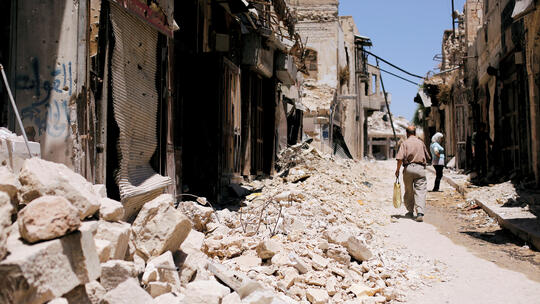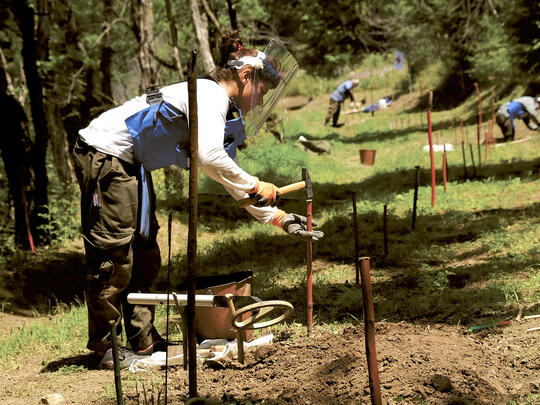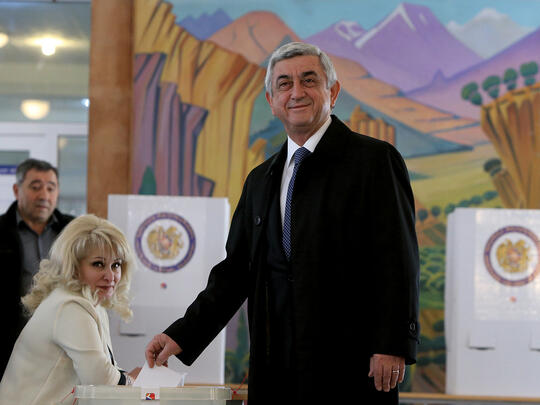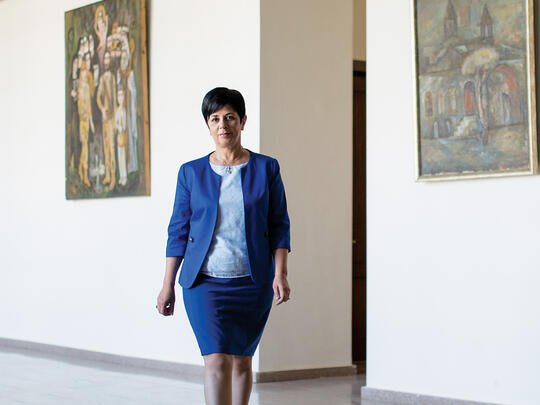After six years of war, bombings and bloodshed, Aleppo has returned to a state of relative peace. Entire neighborhoods reduced to rubble—heaps of twisted metal and broken concrete—are slowly rising from the ashes. And a spirit of hopefulness has replaced despair as Syrians in Aleppo, commonly known as the Jewel of Syria, transition from survival mode to rebuilding and rehabilitation.
While tension and uncertainty remain, throughout Aleppo and other cities home to large Armenian communities, including Damascus, Homs, Latakia, Kessab and Kamishli, a sense of stability and calm is being experienced for the first time since the conflict began in 2011. Among the tens of thousands of Syrian Armenians internally displaced or forced to flee the country altogether, a very small number are gradually returning to their homes, many damaged or looted in their absence.
The devastated city is still faced with a dire humanitarian crisis and many residents live day-to-day, scraping by on charitable donations and salaries worth a fraction of their pre-war value. The guns may be silent but humanitarian aid is still badly needed at least for the next six months, estimates AGBU Syria chairman Nerses Nersoyan. “Our community is still suffering in every respect,” he says. “As the last six years of war resulted in widespread poverty and unemployment, along with the destruction of homes and pain of families who lost loved ones or were wounded amidst the shelling.”
Parallel to the humanitarian aid, AGBU and other international, governmental and local organizations are beginning to plan for the post-conflict phase, prioritizing reconstruction and rehabilitation. Together with the Syrian Armenian Committee for Urgent Relief and Rehabilitation and other partners, AGBU has helped more than 500 residents repair damage to their homes while providing life-saving medical assistance, financial aid, food, electricity, heating and basic necessities to 1,200 Syrian-Armenian families.
As part of its efforts to revitalize the community, AGBU is now providing medium-term loans to help those in need re-start their small businesses or rebuild their shops that were damaged in order to help members of the community support their families once again.
Aleppo’s stores and walls are not all that need rehabilitation. One of the most important concerns for AGBU is the much more difficult to assess long-term psychological scars the war has left on the members of the community, especially children who witnessed the brutality of war or suffered injuries themselves. In preparation for the fall return to classes at the AGBU Lazar Najarian-Calouste Gulbenkian School, the organization has hired a full-time psychologist as a teacher who will devote herself to helping students emotionally process and cope with the aftermath of the conflict. In order to help Armenian children regain a sense of normalcy they last experienced six years ago before the war, AGBU Syria is furthermore planning to launch several cultural and sporting activities in the coming months, including a one-week camp for 250 AGBU-AYA boy scouts and high school students in Kessab.
“We sincerely hope Armenian communities in the diaspora will heed the call for continued assistance,” urged Nersoyan in an appeal to Armenians around the globe, “to help AGBU Syria succeed in accomplishing these projects that will ensure a healthy and productive Armenian community in Syria thrives once again after so many years of suffering.”
As Aleppo’s Armenian community re-emerges from the shadows of war to rebuild, let there be no doubt the same entrepreneurial mentality passed down over centuries, that once transformed Aleppo into the economic engine of a nation, and over the past six years helped a community survive with very little support, will never be extinguished.
Banner photo by Omar Sanadiki/Reuters














